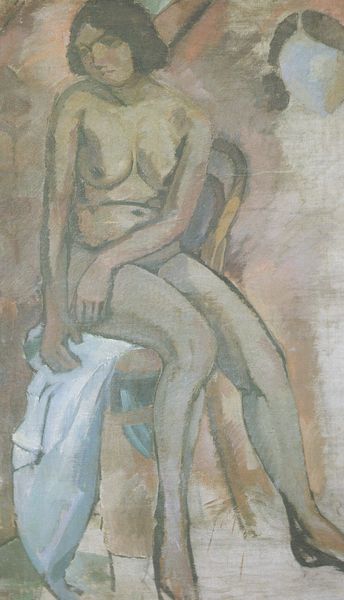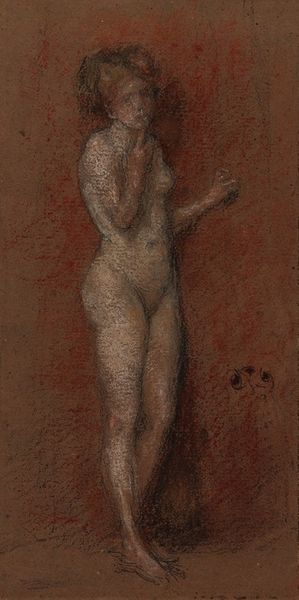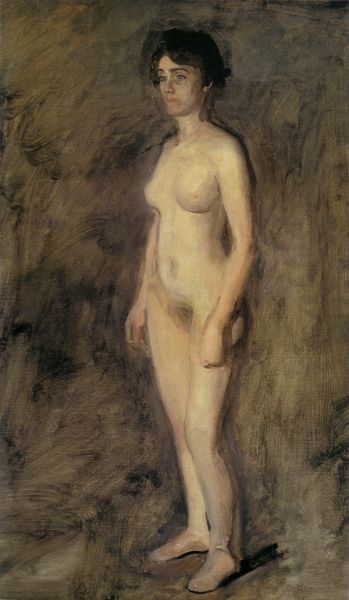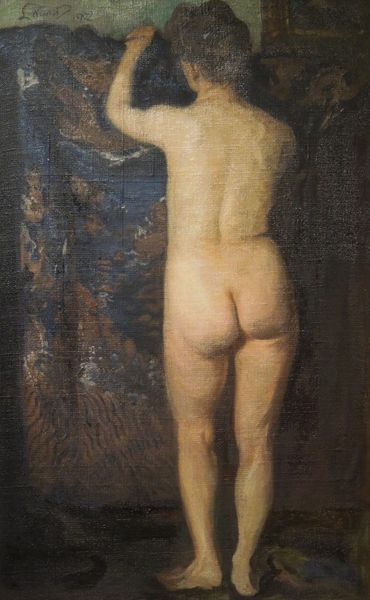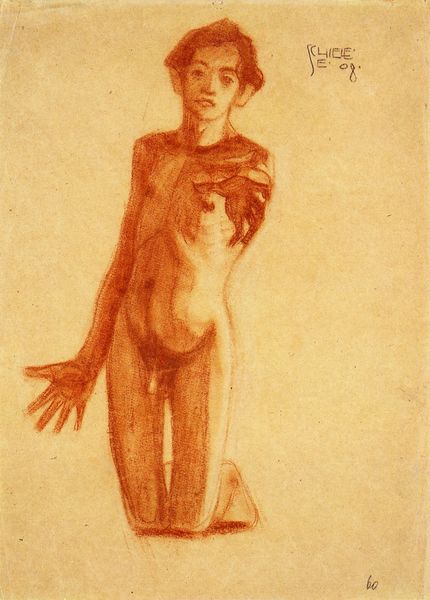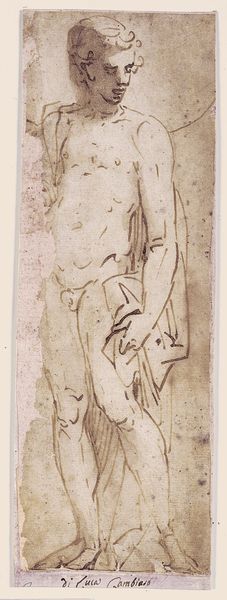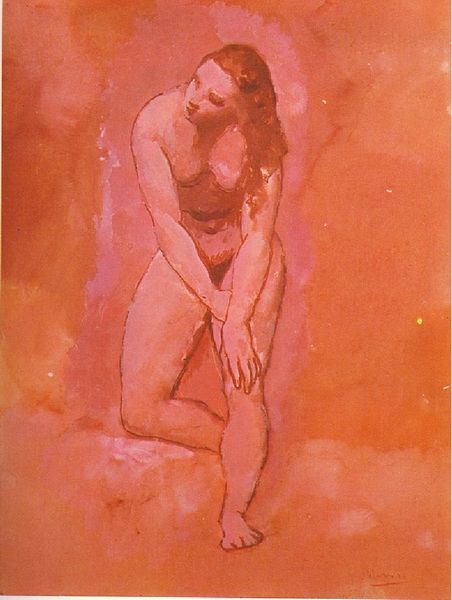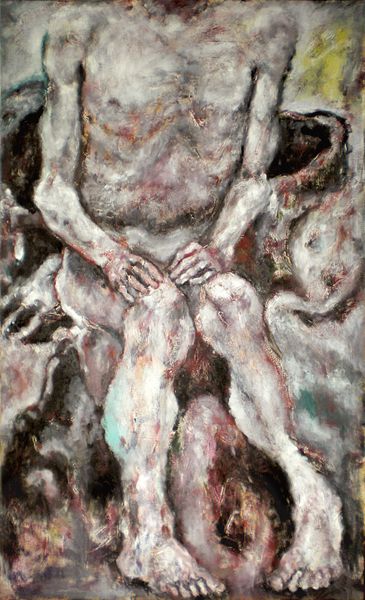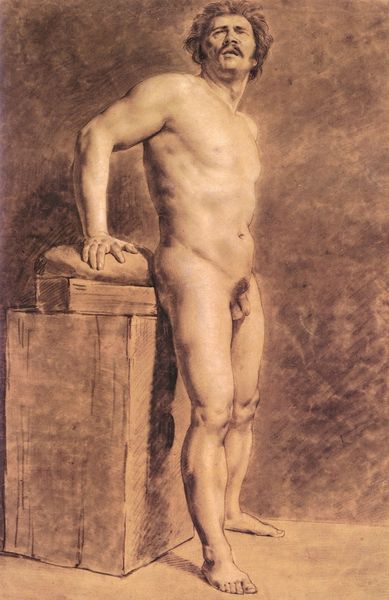
drawing, painting, oil-paint
#
portrait
#
drawing
#
painting
#
oil-paint
#
charcoal drawing
#
figuration
#
oil painting
#
female-nude
#
expressionism
#
portrait drawing
#
charcoal
#
nude
Dimensions: 72.3 x 31 cm
Copyright: Public domain
Curator: We are looking at Paula Modersohn-Becker's oil painting, "Standing female nude" from 1905. It captures a lone female figure, viewed from behind. Editor: It feels remarkably stark. The palette is very limited, almost monochromatic, focusing primarily on tonal variations rather than saturated colors, which contributes to a sense of quietude, of introspection. Curator: Precisely, and it's crucial to remember Becker's historical context. She was actively challenging conventional representations of women in art. Unlike many of her male contemporaries, she rejects idealization. She’s representing the female form with an honest and unapologetic gaze. Editor: Agreed. Her method accentuates form and mass through simplification, eschewing minute detail for a raw, immediate presence. There's a striking asymmetry, a deliberate imbalance in the figure's posture. This creates visual tension and dynamism. Curator: Consider also her personal journals. She constantly grappled with the expectations placed upon women artists, on women as mothers, wives, muses. The Rückenfigur, the figure seen from the back, has long been used as a visual metaphor for contemplation and inner life. Here, she gives that inward turn to a woman. Editor: The composition is notably compressed. The figure seems almost confined by the canvas, furthering the impression of internalized experience. Observe the bold contour lines, and their contribution to a sculptural, almost monumental, effect, especially given its smaller size. Curator: The expressionistic tendencies in her work – her subjective distortion and emotive use of form and color—allow us to see the painting less as a neutral depiction and more as an exploration of female subjectivity at a crucial moment in history. This was painted at the cusp of some truly seismic shifts in women's rights. Editor: It really comes across. Before viewing, I came to this exhibition prepared with terms of semiotic formalism, structuralism… but what is actually felt is the immediacy that really breaks the fourth wall in ways more contemporary art aims for. It feels avant-garde in retrospect. Curator: Indeed. Hopefully we have been able to impart how Modersohn-Becker's brave pursuit of visual truth challenged norms in profound ways. Editor: A worthy revisit to an oeuvre long past due.
Comments
No comments
Be the first to comment and join the conversation on the ultimate creative platform.

